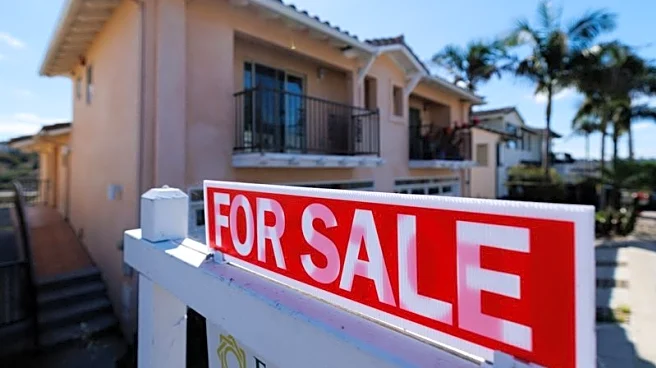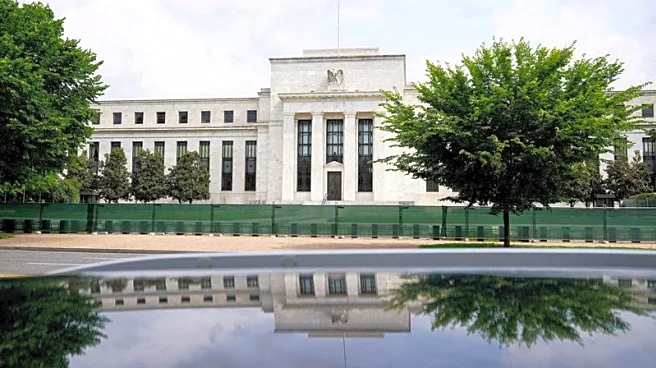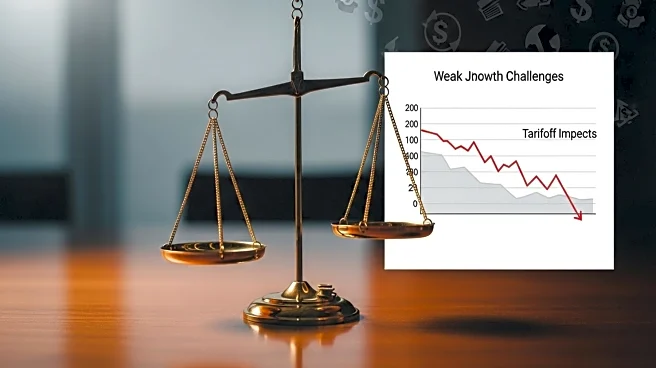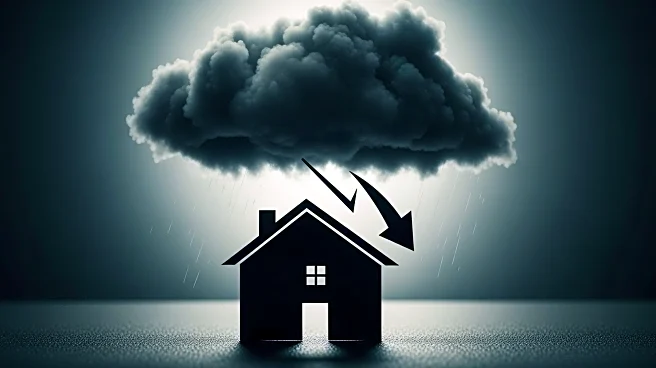What's Happening?
The U.S. Commerce Department reported a significant decline in housing starts for August, with an 8.5% drop compared to the previous month. This decrease is part of a broader trend observed in the housing market, where building permits also fell by 3.7%. The seasonally adjusted annual rate for housing starts was recorded at 1.307 million units, down from 1.429 million in July. The decline was most pronounced in the South, which saw a 21% decrease in housing starts, while the West experienced a 30.4% increase. The data also showed a decrease in building permits across most regions, with the Midwest and South experiencing notable declines. These figures suggest a cooling in the housing market, which has been under pressure from rising interest rates and economic uncertainties.
Why It's Important?
The decline in housing starts is a critical indicator of the health of the U.S. construction sector and the broader economy. A reduction in new housing projects can lead to decreased demand for construction materials and labor, potentially impacting employment in the sector. The housing market is a significant component of the U.S. economy, and fluctuations in this market can have ripple effects on consumer spending and economic growth. The decrease in building permits, a forward-looking indicator, suggests that the slowdown may continue in the coming months. This trend could affect homebuilders, real estate developers, and related industries, potentially leading to a slowdown in economic activity if the trend persists.
What's Next?
Economists and industry stakeholders will be closely monitoring the housing market for further signs of slowdown. The Federal Reserve's interest rate policies will play a crucial role in shaping the future of the housing market. If interest rates remain high, it could further dampen housing demand. Conversely, any easing of rates might stimulate activity. Homebuilders and developers may need to adjust their strategies to navigate the changing market conditions, potentially focusing on more affordable housing options to attract buyers. Additionally, policymakers might consider measures to support the housing market if the downturn continues.











